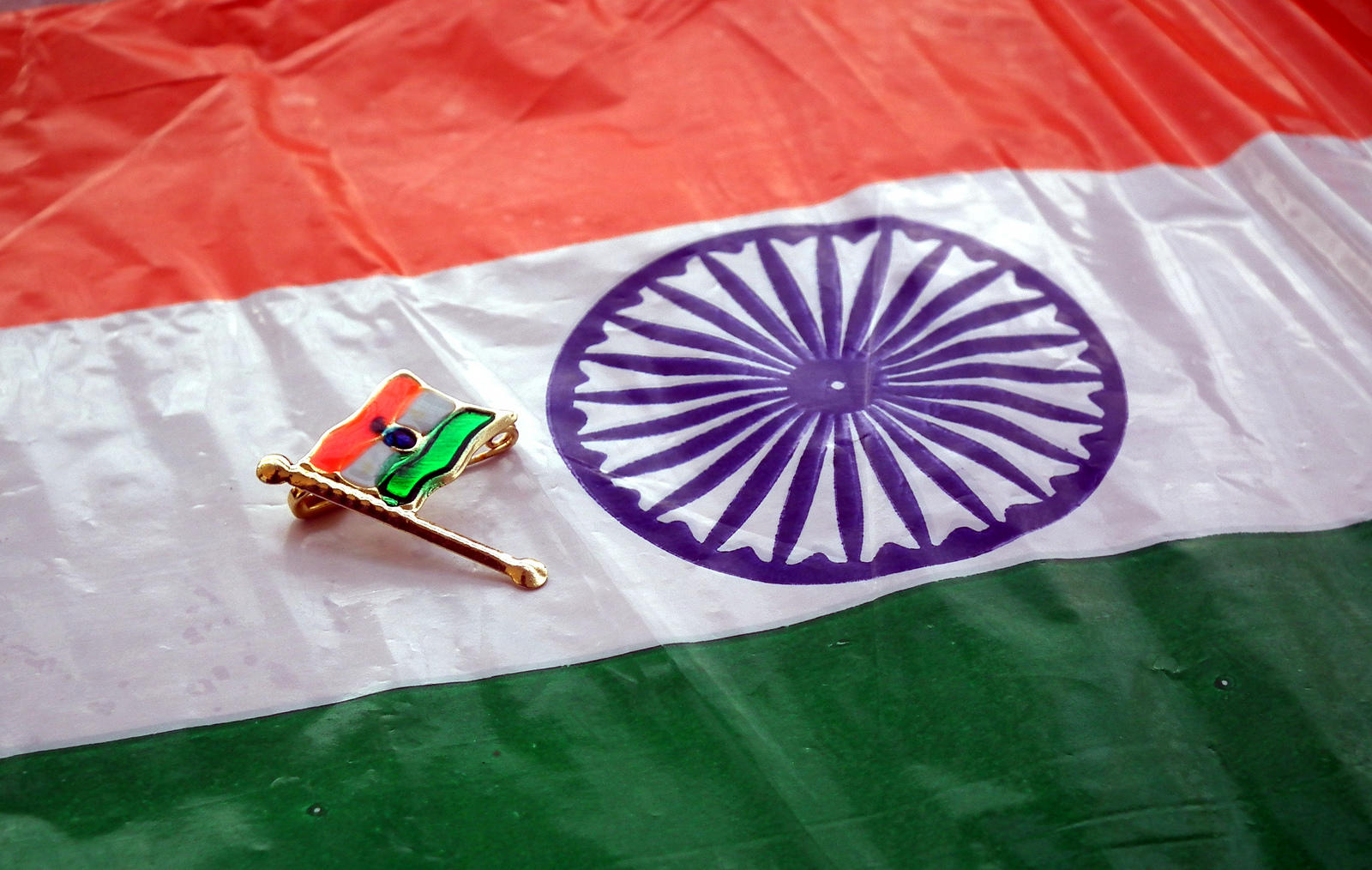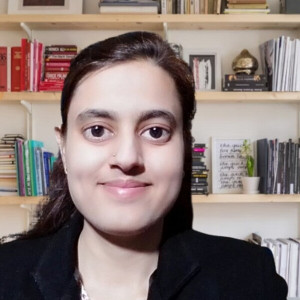Hindi has a rich history that stretches back over a thousand years, evolving from Sanskrit through Prakrit and later Apabhraṃśa dialects before taking its modern form. During the Mughal era and the rise of regional kingdoms, Hindi absorbed influences from Persian and Arabic, while the printing press and 19th‑century literary movements helped standardise its grammar and vocabulary.
Today, Hindi stands among the most widely spoken languages in the world, connecting more than 310 million native speakers across India and the global diaspora, including vibrant communities in places like Singapore. This heritage, paired with its structured approach to verbs, makes it both fascinating and approachable for learners.
When exploring Hindi verbs, understanding the stem is the first step, as it forms the foundation from which other variations grow. By observing how regular endings attach to a stem, you can easily differentiate singular from plural and express a range of tenses, including perfect actions.
Each subject (like “I” or “they”) shapes the verb’s forms, creating a logical system rather than a set of random rules. A Singaporean learner, for instance, might compare this to a hawker centre: the stem is like the main dish, while the different endings are toppings you choose to suit the occasion, making it a familiar, everyday process of building meaning. For a deeper dive, check out [A Guide to Hindi grammar].
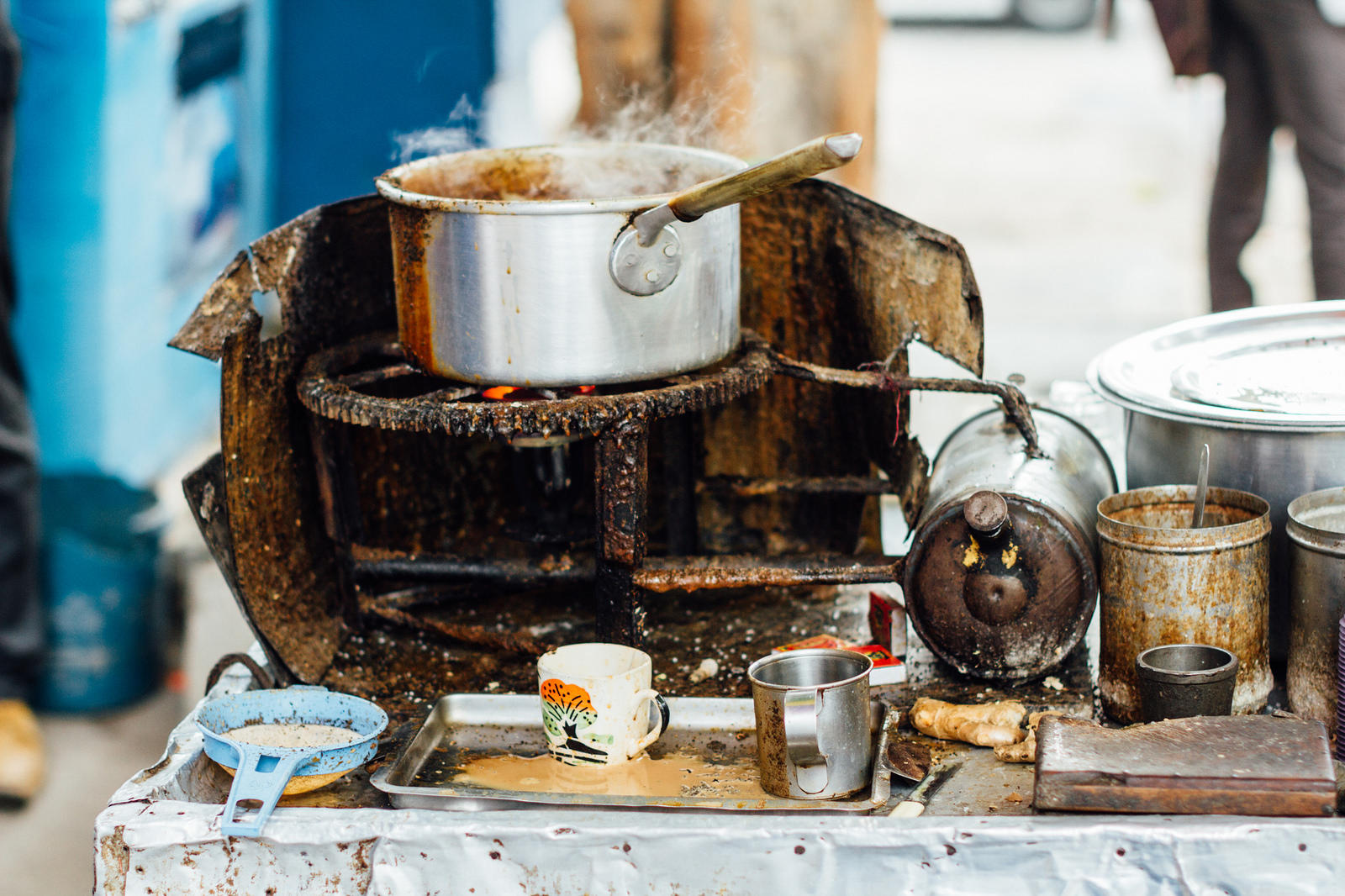
The Journey of Hindi to Official Status
Imagine the year 1947, when India had just gained independence. The country, bursting with diversity, needed a common thread to unite its people. In those days, the air was thick with debates in the Constituent Assembly—should the official script for the nation’s language be Persian, a legacy of centuries of Mughal rule, or Devanagari, deeply tied to Sanskrit roots?
Some leaders argued passionately for Persian script, pointing to its elegant curves and long-standing influence in courtly culture, while others rallied behind Devanagari, claiming it was the voice of the heartland, clear and accessible to the masses. The discussion was anything but quiet—it felt like a tug-of-war of culture and identity. Behind closed doors, letters and petitions flowed in from poets, teachers, and ordinary citizens who believed that Hindi in Devanagari could give a new India its voice.
Since being in India, I am more convinced than ever before that the method of nonviolent resistance is the most potent weapon available to oppressed people in their struggle for justice and human dignity.
- Martin Luther King, Jr., American Baptist minister and activist
Finally, in 1949, after countless sessions and emotional speeches, a consensus emerged. Hindi, written in Devanagari, was declared one of the official languages of the Republic of India in the Constitution of 1950. It wasn’t the victory of one script over another, but rather a step toward uniting a nation still healing from the wounds of partition.
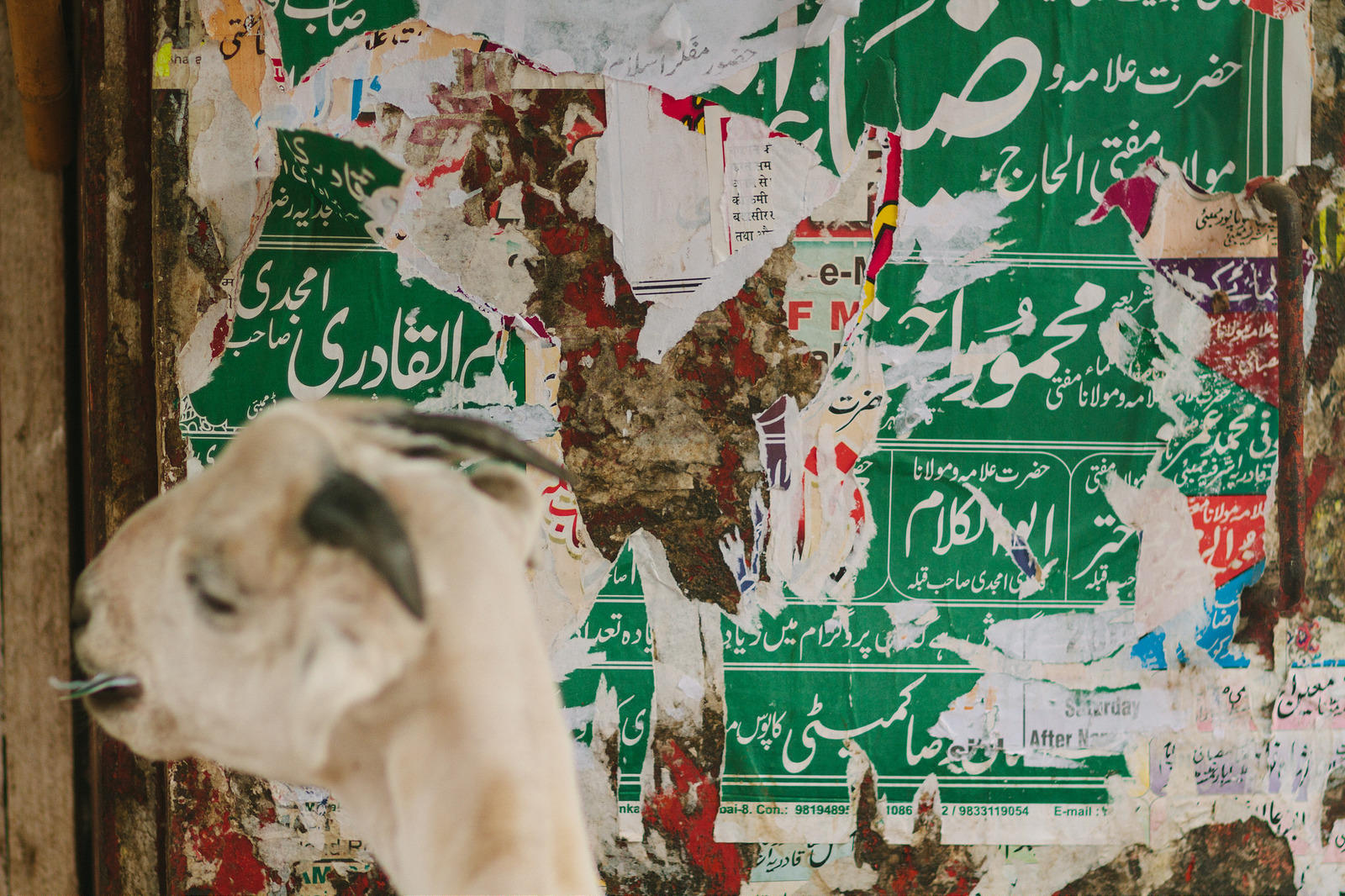

How Verb Conjugation in Hindi Works: A Simple Breakdown
Verb conjugation in Hindi revolves around adjusting a verb based on the subject, gender, and time of action. A simple starting point is to observe how verbs like jaa (to go) or kar (to do) change their endings depending on whether the speaker is feminine or masculine, and whether they refer to the past, present, or future. For example, when a man says “I went,” it becomes main gaya, while for a woman, it is main gayi. Similarly, “you do” translates as aap karte hain for masculine and aap karti hain for feminine. These subtle variations form the foundation of all conjugation patterns, allowing speakers to express actions naturally and accurately.
To make this concept relatable, think of a Singapore hawker centre. The verb stem is like the base dish—say, chicken rice—while the endings, which shift for masculine or feminine, are like toppings or sauces you add based on your taste. Just as “extra sambal” changes the flavour, changing karte to karti changes the meaning. Here’s a small illustration for better understanding:
| Serial No. | Verb (Root) | Meaning | Past (Masculine) | Past (Feminine) | Present (Aap Masculine) | Present (Aap Feminine) | Future (Masculine) | Future (Feminine) |
|---|---|---|---|---|---|---|---|---|
| 1 | Ja | To go | Main gaya | Main gayi | Aap ja rahe hain | Aap ja rahi hain | Main jaunga | Main jaungi |
| 2 | Kar | To do | Main kiya | Main ki | Aap karte hain | Aap karti hain | Main karoonga | Main karoongi |
| 3 | Khana | To eat | Main khaya | Main khayi | Aap khate hain | Aap khati hain | Main khaunga | Main khaungi |
| 4 | Pina | To drink | Main piya | Main piyi | Aap peete hain | Aap peeti hain | Main piyoonga | Main piyoongi |
| 5 | Dekhna | To see | Main dekha | Main dekhi | Aap dekhte hain | Aap dekhti hain | Main dekhoonga | Main dekhoongi |
| 6 | Likhna | To write | Main likha | Main likhi | Aap likhte hain | Aap likhti hain | Main likhoonga | Main likhoongi |
| 7 | Bolna | To speak | Main bola | Main boli | Aap bolte hain | Aap bolti hain | Main boloonga | Main boloongi |
| 8 | Sochna | To think | Main socha | Main sochi | Aap sochte hain | Aap sochti hain | Main sochoonga | Main sochoongi |
| 9 | Sunna | To listen | Main suna | Main suni | Aap sunte hain | Aap sunti hain | Main sunoonga | Main sunoongi |
| 10 | Chalna | To walk | Main chala | Main chali | Aap chalte hain | Aap chalti hain | Main chaloonga | Main chaloongi |
| 11 | Rehna | To stay/live | Main raha | Main rahi | Aap rehte hain | Aap rehti hain | Main rahoonga | Main rahoongi |
| 12 | Padhna | To study/read | Main padha | Main padhi | Aap padhte hain | Aap padhti hain | Main padhunga | Main padhungi |
| 13 | Mangna | To ask/request | Main manga | Main mangi | Aap mangte hain | Aap mangti hain | Main mangoonga | Main mangoongi |
| 14 | Dena | To give | Main diya | Main di | Aap dete hain | Aap deti hain | Main doonga | Main doongi |
| 15 | Lena | To take | Main liya | Main li | Aap lete hain | Aap leti hain | Main loonga | Main loongi |
Verb conjugation might seem tricky at first, but once these simple patterns click, you can construct sentences for any tense or mood. In the next section, we’ll be introducing a Hindi conjugation chart that shows how verbs behave across tenses and persons. For more in-depth references, you can also check out [a complete guide to Hindi tenses] and [a guide to common Hindi verbs]—both of which will give you a structured roadmap for mastering these variations.
Easy Hindi Conjugation Chart for Daily Use
A solid grasp of verb shapes lets you express time, gender, politeness, and number with precision. Think of the system as layers: the core verb root, a Suffix (or set of endings) that marks person and number, and sometimes an Auxiliary element (like hai / hain / tha / thi / honge) that carries tense–aspect or agreement. In daily conversations, you constantly hear rhythmic pairs such as raha / Rahe / Rahi for ongoing actions, and perfect Participle forms like gaya / gayi after motion or completion. The polite Formal register frequently uses aap plus plural-style endings even for a single person, while Main and Ham anchor first‑person statements and Tum sits in the middle, friendly but not overly elevated.
Every Hindi verb form you see is made from small pieces clicked together:
1. Root (basic meaning)
2. Aspect/state piece
3. Helper (the “be” piece)
4. Ending (agreement tag)
Inside the chart, you will spot verbs whose English glosses (e.g., Read for Padhna, root Padh) remind you which everyday actions to practice. Future plural or respectful forms point forward with -ge endings (as in Honge “will be”), while present statements hinge on hai / hain—the visible face of Hona (“to be”). Motion verbs like Jaa (“go”) model how stems combine with aspect markers. You will use this reference to notice patterns: masculine past ending in -a, feminine in -i or -yi, plural or polite often in -e. Each row becomes a mini map that reduces uncertainty and builds an intuitive sense of what “sounds right” in context, whether you are greeting a friend at a hawker centre or narrating what you just finished doing.
Now, explore the “Easy Hindi Conjugation Chart” below: it lines up 50 high‑frequency verbs across past, present (including progressive markers), and future forms—contrasting masculine, feminine, singular, plural, and polite patterns so you can spot recurring endings at a glance.
| Serial No. | Pronoun | Verb (Root) | Singular Past (M) | Singular Past (F) | Singular Present (M) | Singular Present (F) | Singular Future (M) | Singular Future (F) | Plural Past (M) | Plural Past (F) | Plural Present (M) | Plural Present (F) | Plural Future (M) | Plural Future (F) |
|---|---|---|---|---|---|---|---|---|---|---|---|---|---|---|
| 1 | Tum | Ja (to go) | Tum Ja gaya | Tum Ja gayi | Tum Ja rahe hain | Tum Ja rahi hain | Tum Ja jaayega | Tum Ja jaayegi | Tum Ja gaye | Tum Ja gayi thi | Tum Ja rahe hain | Tum Ja rahi hain | Tum Ja honge | Tum Ja hongi |
| 2 | Aap | Kar (to do) | Aap Kar gaya | Aap Kar gayi | Aap Kar rahe hain | Aap Kar rahi hain | Aap Kar jaayega | Aap Kar jaayegi | Aap Kar gaye | Aap Kar gayi thi | Aap Kar rahe hain | Aap Kar rahi hain | Aap Kar honge | Aap Kar hongi |
| 3 | Ham | Khana (to eat) | Ham Khana gaya | Ham Khana gayi | Ham Khana rahe hain | Ham Khana rahi hain | Ham Khana jaayega | Ham Khana jaayegi | Ham Khana gaye | Ham Khana gayi thi | Ham Khana rahe hain | Ham Khana rahi hain | Ham Khana honge | Ham Khana hongi |
| 4 | Vah | Pina (to drink) | Vah Pina gaya | Vah Pina gayi | Vah Pina rahe hain | Vah Pina rahi hain | Vah Pina jaayega | Vah Pina jaayegi | Vah Pina gaye | Vah Pina gayi thi | Vah Pina rahe hain | Vah Pina rahi hain | Vah Pina honge | Vah Pina hongi |
| 5 | Main | Dekhna (to see) | Main Dekhna gaya | Main Dekhna gayi | Main Dekhna rahe hain | Main Dekhna rahi hain | Main Dekhna jaayega | Main Dekhna jaayegi | Main Dekhna gaye | Main Dekhna gayi thi | Main Dekhna rahe hain | Main Dekhna rahi hain | Main Dekhna honge | Main Dekhna hongi |
| 6 | Tum | Likhna (to write) | Tum Likhna gaya | Tum Likhna gayi | Tum Likhna rahe hain | Tum Likhna rahi hain | Tum Likhna jaayega | Tum Likhna jaayegi | Tum Likhna gaye | Tum Likhna gayi thi | Tum Likhna rahe hain | Tum Likhna rahi hain | Tum Likhna honge | Tum Likhna hongi |
| 7 | Aap | Bolna (to speak) | Aap Bolna gaya | Aap Bolna gayi | Aap Bolna rahe hain | Aap Bolna rahi hain | Aap Bolna jaayega | Aap Bolna jaayegi | Aap Bolna gaye | Aap Bolna gayi thi | Aap Bolna rahe hain | Aap Bolna rahi hain | Aap Bolna honge | Aap Bolna hongi |
| 8 | Ham | Sochna (to think) | Ham Sochna gaya | Ham Sochna gayi | Ham Sochna rahe hain | Ham Sochna rahi hain | Ham Sochna jaayega | Ham Sochna jaayegi | Ham Sochna gaye | Ham Sochna gayi thi | Ham Sochna rahe hain | Ham Sochna rahi hain | Ham Sochna honge | Ham Sochna hongi |
| 9 | Vah | Sunna (to listen) | Vah Sunna gaya | Vah Sunna gayi | Vah Sunna rahe hain | Vah Sunna rahi hain | Vah Sunna jaayega | Vah Sunna jaayegi | Vah Sunna gaye | Vah Sunna gayi thi | Vah Sunna rahe hain | Vah Sunna rahi hain | Vah Sunna honge | Vah Sunna hongi |
| 10 | Main | Chalna (to walk) | Main Chalna gaya | Main Chalna gayi | Main Chalna rahe hain | Main Chalna rahi hain | Main Chalna jaayega | Main Chalna jaayegi | Main Chalna gaye | Main Chalna gayi thi | Main Chalna rahe hain | Main Chalna rahi hain | Main Chalna honge | Main Chalna hongi |
| 11 | Tum | Rehna (to stay/live) | Tum Rehna gaya | Tum Rehna gayi | Tum Rehna rahe hain | Tum Rehna rahi hain | Tum Rehna jaayega | Tum Rehna jaayegi | Tum Rehna gaye | Tum Rehna gayi thi | Tum Rehna rahe hain | Tum Rehna rahi hain | Tum Rehna honge | Tum Rehna hongi |
| 12 | Aap | Padhna (to read/study) | Aap Padhna gaya | Aap Padhna gayi | Aap Padhna rahe hain | Aap Padhna rahi hain | Aap Padhna jaayega | Aap Padhna jaayegi | Aap Padhna gaye | Aap Padhna gayi thi | Aap Padhna rahe hain | Aap Padhna rahi hain | Aap Padhna honge | Aap Padhna hongi |
| 13 | Ham | Mangna (to ask/request) | Ham Mangna gaya | Ham Mangna gayi | Ham Mangna rahe hain | Ham Mangna rahi hain | Ham Mangna jaayega | Ham Mangna jaayegi | Ham Mangna gaye | Ham Mangna gayi thi | Ham Mangna rahe hain | Ham Mangna rahi hain | Ham Mangna honge | Ham Mangna hongi |
| 14 | Vah | Dena (to give) | Vah Dena gaya | Vah Dena gayi | Vah Dena rahe hain | Vah Dena rahi hain | Vah Dena jaayega | Vah Dena jaayegi | Vah Dena gaye | Vah Dena gayi thi | Vah Dena rahe hain | Vah Dena rahi hain | Vah Dena honge | Vah Dena hongi |
| 15 | Main | Lena (to take) | Main Lena gaya | Main Lena gayi | Main Lena rahe hain | Main Lena rahi hain | Main Lena jaayega | Main Lena jaayegi | Main Lena gaye | Main Lena gayi thi | Main Lena rahe hain | Main Lena rahi hain | Main Lena honge | Main Lena hongi |
| 16 | Tum | Khilna (to play) | Tum Khilna gaya | Tum Khilna gayi | Tum Khilna rahe hain | Tum Khilna rahi hain | Tum Khilna jaayega | Tum Khilna jaayegi | Tum Khilna gaye | Tum Khilna gayi thi | Tum Khilna rahe hain | Tum Khilna rahi hain | Tum Khilna honge | Tum Khilna hongi |
| 17 | Aap | Sikhna (to learn) | Aap Sikhna gaya | Aap Sikhna gayi | Aap Sikhna rahe hain | Aap Sikhna rahi hain | Aap Sikhna jaayega | Aap Sikhna jaayegi | Aap Sikhna gaye | Aap Sikhna gayi thi | Aap Sikhna rahe hain | Aap Sikhna rahi hain | Aap Sikhna honge | Aap Sikhna hongi |
| 18 | Ham | Samajhna (to understand) | Ham Samajhna gaya | Ham Samajhna gayi | Ham Samajhna rahe hain | Ham Samajhna rahi hain | Ham Samajhna jaayega | Ham Samajhna jaayegi | Ham Samajhna gaye | Ham Samajhna gayi thi | Ham Samajhna rahe hain | Ham Samajhna rahi hain | Ham Samajhna honge | Ham Samajhna hongi |
| 19 | Vah | Rakhna (to keep) | Vah Rakhna gaya | Vah Rakhna gayi | Vah Rakhna rahe hain | Vah Rakhna rahi hain | Vah Rakhna jaayega | Vah Rakhna jaayegi | Vah Rakhna gaye | Vah Rakhna gayi thi | Vah Rakhna rahe hain | Vah Rakhna rahi hain | Vah Rakhna honge | Vah Rakhna hongi |
| 20 | Main | Banana (to make) | Main Banana gaya | Main Banana gayi | Main Banana rahe hain | Main Banana rahi hain | Main Banana jaayega | Main Banana jaayegi | Main Banana gaye | Main Banana gayi thi | Main Banana rahe hain | Main Banana rahi hain | Main Banana honge | Main Banana hongi |
| 21 | Tum | Kholna (to open) | Tum Kholna gaya | Tum Kholna gayi | Tum Kholna rahe hain | Tum Kholna rahi hain | Tum Kholna jaayega | Tum Kholna jaayegi | Tum Kholna gaye | Tum Kholna gayi thi | Tum Kholna rahe hain | Tum Kholna rahi hain | Tum Kholna honge | Tum Kholna hongi |
| 22 | Aap | Band Karna (to close) | Aap Band gaya | Aap Band gayi | Aap Band rahe hain | Aap Band rahi hain | Aap Band jaayega | Aap Band jaayegi | Aap Band gaye | Aap Band gayi thi | Aap Band rahe hain | Aap Band rahi hain | Aap Band honge | Aap Band hongi |
| 23 | Ham | Ghuma (to roam) | Ham Ghuma gaya | Ham Ghuma gayi | Ham Ghuma rahe hain | Ham Ghuma rahi hain | Ham Ghuma jaayega | Ham Ghuma jaayegi | Ham Ghuma gaye | Ham Ghuma gayi thi | Ham Ghuma rahe hain | Ham Ghuma rahi hain | Ham Ghuma honge | Ham Ghuma hongi |
| 24 | Vah | Bhejna (to send) | Vah Bhejna gaya | Vah Bhejna gayi | Vah Bhejna rahe hain | Vah Bhejna rahi hain | Vah Bhejna jaayega | Vah Bhejna jaayegi | Vah Bhejna gaye | Vah Bhejna gayi thi | Vah Bhejna rahe hain | Vah Bhejna rahi hain | Vah Bhejna honge | Vah Bhejna hongi |
| 25 | Main | Bulana (to call) | Main Bulana gaya | Main Bulana gayi | Main Bulana rahe hain | Main Bulana rahi hain | Main Bulana jaayega | Main Bulana jaayegi | Main Bulana gaye | Main Bulana gayi thi | Main Bulana rahe hain | Main Bulana rahi hain | Main Bulana honge | Main Bulana hongi |
| 26 | Tum | Pakadna (to catch) | Tum Pakadna gaya | Tum Pakadna gayi | Tum Pakadna rahe hain | Tum Pakadna rahi hain | Tum Pakadna jaayega | Tum Pakadna jaayegi | Tum Pakadna gaye | Tum Pakadna gayi thi | Tum Pakadna rahe hain | Tum Pakadna rahi hain | Tum Pakadna honge | Tum Pakadna hongi |
| 27 | Aap | Khadna (to stand) | Aap Khadna gaya | Aap Khadna gayi | Aap Khadna rahe hain | Aap Khadna rahi hain | Aap Khadna jaayega | Aap Khadna jaayegi | Aap Khadna gaye | Aap Khadna gayi thi | Aap Khadna rahe hain | Aap Khadna rahi hain | Aap Khadna honge | Aap Khadna hongi |
| 28 | Ham | Baithna (to sit) | Ham Baithna gaya | Ham Baithna gayi | Ham Baithna rahe hain | Ham Baithna rahi hain | Ham Baithna jaayega | Ham Baithna jaayegi | Ham Baithna gaye | Ham Baithna gayi thi | Ham Baithna rahe hain | Ham Baithna rahi hain | Ham Baithna honge | Ham Baithna hongi |
| 29 | Vah | Chhodna (to leave) | Vah Chhodna gaya | Vah Chhodna gayi | Vah Chhodna rahe hain | Vah Chhodna rahi hain | Vah Chhodna jaayega | Vah Chhodna jaayegi | Vah Chhodna gaye | Vah Chhodna gayi thi | Vah Chhodna rahe hain | Vah Chhodna rahi hain | Vah Chhodna honge | Vah Chhodna hongi |
| 30 | Main | Sona (to sleep) | Main Sona gaya | Main Sona gayi | Main Sona rahe hain | Main Sona rahi hain | Main Sona jaayega | Main Sona jaayegi | Main Sona gaye | Main Sona gayi thi | Main Sona rahe hain | Main Sona rahi hain | Main Sona honge | Main Sona hongi |
| 31 | Tum | Jagna (to wake up) | Tum Jagna gaya | Tum Jagna gayi | Tum Jagna rahe hain | Tum Jagna rahi hain | Tum Jagna jaayega | Tum Jagna jaayegi | Tum Jagna gaye | Tum Jagna gayi thi | Tum Jagna rahe hain | Tum Jagna rahi hain | Tum Jagna honge | Tum Jagna hongi |
| 32 | Aap | Badhna (to increase) | Aap Badhna gaya | Aap Badhna gayi | Aap Badhna rahe hain | Aap Badhna rahi hain | Aap Badhna jaayega | Aap Badhna jaayegi | Aap Badhna gaye | Aap Badhna gayi thi | Aap Badhna rahe hain | Aap Badhna rahi hain | Aap Badhna honge | Aap Badhna hongi |
| 33 | Ham | Ghata (to decrease) | Ham Ghata gaya | Ham Ghata gayi | Ham Ghata rahe hain | Ham Ghata rahi hain | Ham Ghata jaayega | Ham Ghata jaayegi | Ham Ghata gaye | Ham Ghata gayi thi | Ham Ghata rahe hain | Ham Ghata rahi hain | Ham Ghata honge | Ham Ghata hongi |
| 34 | Vah | Lagana (to apply) | Vah Lagana gaya | Vah Lagana gayi | Vah Lagana rahe hain | Vah Lagana rahi hain | Vah Lagana jaayega | Vah Lagana jaayegi | Vah Lagana gaye | Vah Lagana gayi thi | Vah Lagana rahe hain | Vah Lagana rahi hain | Vah Lagana honge | Vah Lagana hongi |
| 35 | Main | Pahuchna (to reach) | Main Pahuchna gaya | Main Pahuchna gayi | Main Pahuchna rahe hain | Main Pahuchna rahi hain | Main Pahuchna jaayega | Main Pahuchna jaayegi | Main Pahuchna gaye | Main Pahuchna gayi thi | Main Pahuchna rahe hain | Main Pahuchna rahi hain | Main Pahuchna honge | Main Pahuchna hongi |
| 36 | Tum | Girana (to drop) | Tum Girana gaya | Tum Girana gayi | Tum Girana rahe hain | Tum Girana rahi hain | Tum Girana jaayega | Tum Girana jaayegi | Tum Girana gaye | Tum Girana gayi thi | Tum Girana rahe hain | Tum Girana rahi hain | Tum Girana honge | Tum Girana hongi |
| 37 | Aap | Chakhna (to taste) | Aap Chakhna gaya | Aap Chakhna gayi | Aap Chakhna rahe hain | Aap Chakhna rahi hain | Aap Chakhna jaayega | Aap Chakhna jaayegi | Aap Chakhna gaye | Aap Chakhna gayi thi | Aap Chakhna rahe hain | Aap Chakhna rahi hain | Aap Chakhna honge | Aap Chakhna hongi |
| 38 | Ham | Peetna (to beat) | Ham Peetna gaya | Ham Peetna gayi | Ham Peetna rahe hain | Ham Peetna rahi hain | Ham Peetna jaayega | Ham Peetna jaayegi | Ham Peetna gaye | Ham Peetna gayi thi | Ham Peetna rahe hain | Ham Peetna rahi hain | Ham Peetna honge | Ham Peetna hongi |
| 39 | Vah | Seena (to sew) | Vah Seena gaya | Vah Seena gayi | Vah Seena rahe hain | Vah Seena rahi hain | Vah Seena jaayega | Vah Seena jaayegi | Vah Seena gaye | Vah Seena gayi thi | Vah Seena rahe hain | Vah Seena rahi hain | Vah Seena honge | Vah Seena hongi |
| 40 | Main | Tootna (to break) | Main Tootna gaya | Main Tootna gayi | Main Tootna rahe hain | Main Tootna rahi hain | Main Tootna jaayega | Main Tootna jaayegi | Main Tootna gaye | Main Tootna gayi thi | Main Tootna rahe hain | Main Tootna rahi hain | Main Tootna honge | Main Tootna hongi |
| 41 | Tum | Jodna (to join) | Tum Jodna gaya | Tum Jodna gayi | Tum Jodna rahe hain | Tum Jodna rahi hain | Tum Jodna jaayega | Tum Jodna jaayegi | Tum Jodna gaye | Tum Jodna gayi thi | Tum Jodna rahe hain | Tum Jodna rahi hain | Tum Jodna honge | Tum Jodna hongi |
| 42 | Aap | Sojna (to decorate) | Aap Sojna gaya | Aap Sojna gayi | Aap Sojna rahe hain | Aap Sojna rahi hain | Aap Sojna jaayega | Aap Sojna jaayegi | Aap Sojna gaye | Aap Sojna gayi thi | Aap Sojna rahe hain | Aap Sojna rahi hain | Aap Sojna honge | Aap Sojna hongi |
| 43 | Ham | Poochna (to ask) | Ham Poochna gaya | Ham Poochna gayi | Ham Poochna rahe hain | Ham Poochna rahi hain | Ham Poochna jaayega | Ham Poochna jaayegi | Ham Poochna gaye | Ham Poochna gayi thi | Ham Poochna rahe hain | Ham Poochna rahi hain | Ham Poochna honge | Ham Poochna hongi |
| 44 | Vah | Bachna (to save) | Vah Bachna gaya | Vah Bachna gayi | Vah Bachna rahe hain | Vah Bachna rahi hain | Vah Bachna jaayega | Vah Bachna jaayegi | Vah Bachna gaye | Vah Bachna gayi thi | Vah Bachna rahe hain | Vah Bachna rahi hain | Vah Bachna honge | Vah Bachna hongi |
| 45 | Main | Chupna (to hide) | Main Chupna gaya | Main Chupna gayi | Main Chupna rahe hain | Main Chupna rahi hain | Main Chupna jaayega | Main Chupna jaayegi | Main Chupna gaye | Main Chupna gayi thi | Main Chupna rahe hain | Main Chupna rahi hain | Main Chupna honge | Main Chupna hongi |
| 46 | Tum | Udna (to fly) | Tum Udna gaya | Tum Udna gayi | Tum Udna rahe hain | Tum Udna rahi hain | Tum Udna jaayega | Tum Udna jaayegi | Tum Udna gaye | Tum Udna gayi thi | Tum Udna rahe hain | Tum Udna rahi hain | Tum Udna honge | Tum Udna hongi |
| 47 | Aap | Nikalna (to go out) | Aap Nikalna gaya | Aap Nikalna gayi | Aap Nikalna rahe hain | Aap Nikalna rahi hain | Aap Nikalna jaayega | Aap Nikalna jaayegi | Aap Nikalna gaye | Aap Nikalna gayi thi | Aap Nikalna rahe hain | Aap Nikalna rahi hain | Aap Nikalna honge | Aap Nikalna hongi |
| 48 | Ham | Badhna (to grow) | Ham Badhna gaya | Ham Badhna gayi | Ham Badhna rahe hain | Ham Badhna rahi hain | Ham Badhna jaayega | Ham Badhna jaayegi | Ham Badhna gaye | Ham Badhna gayi thi | Ham Badhna rahe hain | Ham Badhna rahi hain | Ham Badhna honge | Ham Badhna hongi |
| 49 | Vah | Chadhna (to climb) | Vah Chadhna gaya | Vah Chadhna gayi | Vah Chadhna rahe hain | Vah Chadhna rahi hain | Vah Chadhna jaayega | Vah Chadhna jaayegi | Vah Chadhna gaye | Vah Chadhna gayi thi | Vah Chadhna rahe hain | Vah Chadhna rahi hain | Vah Chadhna honge | Vah Chadhna hongi |
| 50 | Main | Dhona (to wash) | Main Dhona gaya | Main Dhona gayi | Main Dhona rahe hain | Main Dhona rahi hain | Main Dhona jaayega | Main Dhona jaayegi | Main Dhona gaye | Main Dhona gayi thi | Main Dhona rahe hain | Main Dhona rahi hain | Main Dhona honge | Main Dhona hongi |
This conjugation chart is more than a static grid; it is a living pattern bank you can Use to assemble accurate verb phrases in real situations—greeting elders (choose the Formal aap forms), planning what Ham will do tomorrow (future -ge endings), or narrating what Tum padh rahe ho (are reading) right now. By tracing how a single root like padh- produces main padh raha hoon, ham padh rahe the, or a future ham padh rahe Honge in a projected scenario, you internalise the moving parts: root + aspect/participial marker + agreement + auxiliary.
How to Read the Chart (A Routine)
- Scan one column (e.g. all past feminine) to notice the repeating -i.
- Circle all future plural/polite forms: you’ll keep seeing -ge or -enge (same family as in Honge “will be”).
- Underline every progressive cluster (raha / Rahe / Rahi) to cement the pattern.
- Practice swapping pronouns: say the same sentence with Main, then Tum, then aap, then Ham—adjust just the tiny pieces that need to move.
- Use mini stories: “In the morning main padh raha hoon, by noon ham padh rahe the, tomorrow ham padhenge.” Story glue helps memory.
Each element keeps its function transparent, so alteration never feels random. Keep returning to progressive sequences (raha / Rahe / Rahi), perfect participle contrasts (-a / -i / -e), and the be‑forms (hai / hogi / Honge) to reinforce a mental template you can adapt to any new verb you meet. When you feel comfortable swapping pronouns and tenses fluidly, take the next step into structuring complete statements, questions, and connected narratives—see [Building Sentences in Hindi] for turning these conjugated pieces into clear, natural communication.
Quick Cheat Codes
| Function | Tile You Drop In | Quick Clue |
|---|---|---|
| Ongoing action | raha / Rahe / Rahi | Change this for gender/number |
| Finished action | -a / -i / -e (perfect participle) | “Completed” feeling |
| Present “is/are” | Hai / hain | Agreement with subject |
| Past “was/were” | tha / Thi / the | Time shift to past |
| Future “will be” | hoga / hogi / Honge | “Future be” helper |
| Will (verb) | -ga / -gi / -ge on stem | Attach to root |
Interactive Hindi Verb Conjugation Worksheet: Present, Past, and Future Tenses
Understanding Hindi verb conjugation is essential to form correct present tense, past tense, and future tense sentences. This worksheet will help you practice real-life structures such as padh raha, padh rahi, padh rahe, kar rahe, and voh yeh padh raha hai. By focusing on continuous, perfect, and regular patterns, learners can master the Hindi verbs step by step.
Below is a set of exercises, phrases, and examples designed for students who want to read, repeat, and apply Hindi verb conjugation rules in everyday conversations.
Main kar raha hoon – I am doing (used by a male speaker). The word raha marks the masculine form in the singular.
Main kar rahi hoon – I am doing (used by a female speaker). The word rahi marks the feminine form in the singular.
The table below provides a multilingual breakdown of simple Hindi sentences, designed to help learners understand how Hindi sentence structures work in everyday conversation. Each example includes the Hindi sentence, its English meaning, the correct Devanagari script, and pronunciation. To support multilingual learners, we've also included Malay and Mandarin translations with pronunciations. Notes are provided for each sentence to explain grammar rules, formality levels, and usage context—making it easier for beginners to grasp sentence formation in Hindi.
| Hindi Sentence | English Meaning | Hindi (Devanagari) | Hindi Pronunciation | Malay Translation | Malay Pronunciation | Mandarin Translation | Mandarin Pronunciation (Pinyin) | Notes |
|---|---|---|---|---|---|---|---|---|
| Tum kar rahe ho | You are doing (informal) | तुम कर रहे हो | tum kar rahe ho | Kamu sedang buat | kah-moo seh-dahng boo-aht | 你在做 | Nǐ zài zuò | "Tum" is informal; "rahe ho" shows present continuous action. |
| Aap kar rahe hain | You are doing (formal/polite) | आप कर रहे हैं | aap kar rahe hain | Anda sedang buat | ahn-dah seh-dahng boo-aht | 您在做 | Nín zài zuò | "Aap" is formal; "rahe hain" shows respect or plural form. |
| Voh yeh kar raha hai | He is doing this | वह यह कर रहा है | voh yeh kar raha hai | Dia sedang buat ini (lelaki) | dee-ah seh-dahng boo-aht ee-nee | 他正在做这个 | Tā zhèngzài zuò zhège | Masculine form; "raha hai" indicates male subject. |
| Voh yeh kar rahi hai | She is doing this | वह यह कर रही है | voh yeh kar rahi hai | Dia sedang buat ini (perempuan) | dee-ah seh-dahng boo-aht ee-nee | 她正在做这个 | Tā zhèngzài zuò zhège | Feminine form; "rahi hai" indicates female subject. |
| Ye log padh rahe hain | These people are studying | ये लोग पढ़ रहे हैं | ye log padh rahe hain | Mereka sedang belajar | muh-ray-kah seh-dahng bluh-jar | 他们正在学习 | Tāmen zhèngzài xuéxí | Plural form; "rahe hain" for multiple people. |
| Kar rahe ho | You are doing (conversational) | कर रहे हो | kar rahe ho | Kamu sedang buat | kah-moo seh-dahng boo-aht | 你在做 | Nǐ zài zuò | Fragment; still indicates present continuous action. |
| Kar rahe hain | They / You (formal) are doing | कर रहे हैं | kar rahe hain | Mereka / Anda sedang buat | muh-ray-kah / ahn-dah seh-dahng boo-aht | 他们在做 / 您在做 | Tāmen zài zuò / Nín zài zuò | "Rahe hain" suits plural or polite/formal use. |
| Kar rahe | Doing (root/continuing form) | कर रहे | kar rahe | Sedang buat (root) | seh-dahng boo-aht | 做着 (基础形式) | Zuòzhe (jīchǔ xíngshì) | Used in drills or practice; not a complete sentence. |
Main padh raha thaa – I was reading (male speaker). Here, raha + thaa marks the past action in progress.
Main padh rahi thii – I was reading (female speaker). Notice how rahi + thii indicates the feminine form.
The table below explains how to express past actions in Hindi using common sentence patterns.
| Hindi Sentence | English Meaning | Hindi (Devanagari) | Hindi Pronunciation | Malay Translation | Malay Pronunciation | Mandarin Translation | Mandarin Pronunciation (Pinyin) | Notes |
|---|---|---|---|---|---|---|---|---|
| Tum padh rahe the | You were reading (informal) | तुम पढ़ रहे थे | tum padh rahe the | Kamu sedang membaca | kah-moo seh-dahng mem-bah-chah | 你在读书 | Nǐ zài dúshū | "Rahe the" = past continuous masculine/plural; shows ongoing past action. |
| Tum padh rahi thii | You (female) were reading | तुम पढ़ रही थी | tum padh rahi thii | Kamu (perempuan) sedang membaca | kah-moo per-em-puan seh-dahng mem-bah-chah | 你(女)在读书 | Nǐ (nǚ) zài dúshū | "Rahi thii" = feminine past continuous. |
| Voh padh raha thaa | He was reading | वह पढ़ रहा था | voh padh raha thaa | Dia (lelaki) sedang membaca | dee-ah le-la-ki seh-dahng mem-bah-chah | 他在读书 | Tā zài dúshū | Masculine past continuous: "raha thaa" = he was ...‑ing. |
| Voh padh rahi thii | She was reading | वह पढ़ रही थी | voh padh rahi thii | Dia (perempuan) sedang membaca | dee-ah per-em-puan seh-dahng mem-bah-chah | 她在读书 | Tā zài dúshū | Feminine past continuous structure. |
| Padhta tha / thii | He/She used to read | पढ़ता था / पढ़ती थी | padhta tha / padhti thii | Dia biasa membaca / pernah membaca | dee-ah bee-ah-sah / per-nah mem-bah-chah | 他/她过去常读书 | Tā guòqù cháng dúshū | Habitual action in the past; indicates repetition over time. |
| Raha rahi thaa | (…was …‑ing) | रहा / रही था | raha / rahi thaa | ...sedang... (terus berlaku) | seh-dahng ber-la-ku | ...正在...中 | Zhèngzài ... zhōng | Shows ongoing past action, gender dependent. |
| Rahi tha thi | (…was/were …‑ing – feminine/masculine markers) | रही / था / थी | rahi / tha / thi | ...sedang... (bentuk jantina) | seh-dahng (jan-ti-nah) | ...正在...(性别区分) | Zhèngzài ... (xìngbié qūfēn) | Highlights gender differences in past continuous verbs. |
| Raha thaa | Was (masculine, emphatic) | रहा था | raha thaa | Sedang (lelaki, penekanan) | seh-dahng (le-la-ki, pe-nek-ah-nan) | 正在...(男性,强调) | Zhèngzài ... (nánxìng, qiángdiào) | Older or emphatic masculine past form; still grammatically correct. |
Main padh raha hunga – I (male) will be reading. Here, raha + hunga shows the continuous action in the future tense.
Main padh rahi hungi – I (female) will be reading. The use of rahi hungi indicates the feminine future continuous.
The table below focuses on the Future Tense in Hindi, showing how to express ongoing actions that will take place in the future. Each sentence is translated into English, Malay, and Mandarin, with pronunciations included to support multilingual learners. Use this as a reference to understand gender and plurality patterns in future progressive forms.
| Hindi Sentence | English Meaning | Devanagari Script | Hindi Pronunciation | Malay Translation | Malay Pronunciation | Mandarin Translation | Mandarin Pronunciation | Notes |
|---|---|---|---|---|---|---|---|---|
| Tum padh rahe honge | You will be reading | तुम पढ़ रहे होंगे | Tum padh rahe honge | Awak akan sedang membaca | a-wak a-kan se-daang mem-ba-ca | 你会在阅读 | Nǐ huì zài yuèdú | Future continuous; informal/plural "you". |
| Voh padh raha hunga | He will be reading | वह पढ़ रहा हूंगा | Voh padh raha hunga | Dia (lelaki) akan sedang membaca | dee-a a-kan se-daang mem-ba-ca | 他将会在阅读 | Tā jiāng huì zài yuèdú | Masculine singular future continuous form. |
| Voh padh rahi hungi | She will be reading | वह पढ़ रही हूंगी | Voh padh rahi hungi | Dia (perempuan) akan sedang membaca | dee-a a-kan se-daang mem-ba-ca | 她将会在阅读 | Tā jiāng huì zài yuèdú | Feminine singular future continuous form. |
| Padh rahe honge | They will be reading | पढ़ रहे होंगे | Padh rahe honge | Mereka akan sedang membaca | me-re-ka a-kan se-daang mem-ba-ca | 他们会在阅读 | Tāmen huì zài yuèdú | Plural form for future continuous. |
| Rahi honge hungi | Will be (she/they) | रही होंगे / हूंगी | Rahi honge / hungi | Akan sedang (dia/perempuan) | a-kan se-daang dee-a | 会在阅读(她们) | Huì zài yuèdú (tāmen) | Shows gender/plural differences in future progressive forms. |
| Rahi hunga hungi | Will be reading (gender) | रही हूंगा / हूंगी | Rahi hunga / hungi | Akan sedang membaca (lelaki/perempuan) | a-kan se-daang mem-ba-ca | 将会在阅读(他/她) | Jiāng huì zài yuèdú (tā/tā) | Demonstrates auxiliary verb use for male/female future tense. |
| Raha rahi hunga | Will be reading | रहा / रही हूंगा | Raha / rahi hunga | Akan sedang membaca | a-kan se-daang mem-ba-ca | 将会在阅读 | Jiāng huì zài yuèdú | Combines masculine/feminine markers for future reading. |
| Honge hungi | Will be | होंगे / हूंगी | Honge / hungi | Akan | a-kan | 会 | Huì | Auxiliary forms meaning "will be"; used in future continuous context. |
Convert voh yeh padh raha hai to past continuous (masc & fem).
Turn tum padh rahi thi into future progressive.
Change main padh raha tha (masc) to plural “they”.
At this point, you have seen how every Hindi sentence you read starts by identifying the Subject, then choosing the right Participle, and finally attaching a matching Suffix plus the auxiliary (here we’ve called it Ona to remind you of hona). When you spot the Subject first, the path from root like Jaa (“to go”) or a study root like padh to a finished form becomes predictable: root → Participle (for aspect) → Suffix (for gender/number/politeness) → Ona form. Each time you read a new line, pause and label the Subject, underline the Participle, circle the Suffix, and note which Ona piece appears (present, past, or future). Repeating that tiny routine trains your eye to decode forms built from Jaa just as easily as those built from other verbs.
Remember: the Subject drives agreement; the Participle carries aspect; the Suffix finishes the agreement signal; Ona supplies time and links everything; and frequent, mindful Read/speak cycles turn the pattern into instinct. Take ten fresh verbs today (include Jaa) and for each write a mini ladder: Subject changes, Participle swaps (progressive vs. perfect), Suffix adjustments, and the matching Ona forms. Then read the ladders aloud twice. This focused recycling is far more powerful than skimming long lists. Keep returning to the trio “Subject – Participle – Suffix – Ona” and soon you will glide from “I go” to nuanced narrative forms with Jaa and beyond. Stay consistent, keep a daily Read log, and celebrate every small, correct build—fluency grows exactly from these precise layers.
Global Destinations and Platforms for Hindi Lessons
Choosing where to take a Hindi lesson starts with clarifying your study style: some learners thrive on a formal timetable with a regular weekly rhythm, while others prefer a lighter path that keeps explanations simple and leaves room to explore at their own pace. High‑quality providers (on campus or online) have used clear, graded materials you can read and revisit, often pairing a small set of core patterns with a few free practice tools so progress never depends only on paid add‑ons. The aim is to build a perfect base of core verbs and sentence habits before you scale into richer expression. In the next sections, we’ll map trusted options in Singapore, India, London, and online so you can match format and goals efficiently.
Where to Find Simple and Effective Hindi Lessons in Singapore
Singapore offers more than one reliable Hindi lesson path: university modules, structured community classes, and private small‑group sessions. University options give you a formal timetable and a regular weekly rhythm; community centres and cultural societies provide evening or weekend batches that feel more flexible. In every format, teachers start with the verb stem and a simple set of patterns so you can build the present tense accurately before touching past or future.
Reading practice is used early (short dialogues you can read), so pronunciation and spelling grow together. As you gain control of agreement endings, you move naturally into the perfect forms without memorising long lists. This steady progression keeps overload low and shows you exactly how small changes shift meaning. Shortlist two providers, compare the schedule and certification, and enrol in the one whose structure you can finish—finishing matters more than starting fast.
If you want a formal and certified way to learn Hindi in Singapore, consider these key providers:
Offers structured semester modules.
Designed for full-time or adult learners
These run over 12-13 weeks and award official academic credits.
Curriculum includes Devanagari reading, writing, conversational grammar, and layered progression into more advanced forms.
Location: 21 Lower Kent Ridge Road.
Operated via a community model
This MOE‑aligned programme offers conversational lessons in Basic, Intermediate, and Advanced tiers.
Each tier includes 12 weekly sessions (2.5 hours).
Certificates are awarded after completion, and past participants report positive outcomes in speaking, writing, and cultural understanding.
Location: Main office at 11 Irving Place #09‑04, Tai Seng Point; lessons held at multiple centres across the north, east, and west.
For learners seeking more flexibility, Superprof is a powerful online platform in Singapore that connects students with over 1,000 professional Hindi tutors. These tutors offer personalised classes tailored to individual needs, whether you want to master the basics or advance to complex grammar. With its range of price points, scheduling options, and verified tutor reviews, Superprof is an excellent alternative for students who prefer one-on-one attention or remote learning.
Where to Find Simple and Effective Hindi Lessons in London
If you are lucky enough to live in the English capital, you will not have any trouble finding a Hindi lesson. Britain has a long colonial past, and until 1947, India was under British rule, which explains why London has such an important and thriving Indian community.
One of the leading Hindi teaching schools is the LSI (or Languages Studies International). Founded in 1965 by a former army education officer, the company now has 14 different schools around the world, but its North London location (in Hampstead) offers both one-to-one tuition and small group classes. They tailor their lessons to each student, making sure that you progress at your rhythm.
India is the meeting place of the religions and among these Hinduism alone is by itself a vast and complex thing, not so much a religion as a great diversified and yet subtly unified mass of spiritual thought, realization and aspiration.
- Sri Aurobindo, Indian philosopher, yogi, guru, poet, and nationalist.
The City Literary Institute, based in Covent Garden, offers more than 5,000 short courses to more than 27,000 Londoners every year. Amongst all those courses, they provide a robust Hindi curriculum, ranging from a total beginner to a third-year level course.
When you begin learning Hindi at City Lit, you will mostly develop your listening and speaking skills as these classes focus on spoken Hindi. Learning how to speak Hindi and how to write in the Devanagari script are two entirely different processes, and this way you could start to chat with your new Indian colleagues as soon as you land.
Finally, the School of Oriental and African Studies or SOAS, which is part of the University of London, offers a great beginners' course. This is a long course, running over three terms of 10 weeks each with 2 hours of Hindi lessons every week. This course will cover all the communication skills, listening, speaking, reading and writing. Tutors use both Hindi and English to teach the class, and you will learn everything from Hindi grammar and vocabulary to the Hindi numerals and writing system.

Where to Find Simple and Effective Hindi Lessons in Hindi
If you hadn't had time to take lessons before you left Singapore, do not worry. You will be able to learn Hindi in its home country.
If you are based in Mumbai, World Unite is one of the schools that offer the most comprehensive language classes around the city. The school takes on both foreigners wishing to learn the local languages as well as locals wanting to learn another Indian dialect.
The classes genuinely reflect the melting pot city that Mumb10-minuteai is, and while you are there, why not learn Marathi, Tamil or Kannada?
If you are located in New Delhi, HindiGuru is a well-established Hindi teaching school, mainly aimed at foreigners wanting to learn one of the official languages of India. The school offer multiple options ranging from a 7-day course to a 6-month program and everything in between.
They keep their classes small to be able to make sure that each student receives enough attention from their qualified teacher. Located in South Delhi, it is less than a 10-minute walk from the Malviya Nagar metro station.
The Zabaan Language Institute is another excellent school offering Hindi classes for beginners and advanced speakers alike. Founded by Ali Taqi and Neha Tiwari, who saw that the curriculum offered by most Indian universities focuses solely on reading and writing. They believe that learning a language should focus on "a practical proficiency built on a deep understanding of grammatical structures and rich vocabulary".
"It's not so much what you learn about Mumbai, it's what you learn about yourself, really. It's a funny old hippie thing, but it's true as well. You find out a lot about yourself and your tolerance, and about your inclusiveness."
- Danny Boyle, English director and producer
The Zabaan Institute takes into account the needs, interests and goals of each student to offer the best educational experience possible. Teachers can pick and choose the best teaching materials from the full range of resources available within the Institute. The classes are balanced and will arm you with a deep understanding of Hindi grammatical rules, a solid and rich Hindi vocabulary and conversational Hindi.
One of the unique aspects of the beginner's class offered at the Zabaan Institute is that they are taught by non-native speakers. This means that your teachers will know exactly how hard Hindi might be to learn. These teachers will also give you a continuous informal evaluation of progress, making sure that you are comfortable with the pace of your learning.
Wherever you are in India, here at Superprof, we've got you covered. With a professional network of nearly 1,000 private tutors, be sure that you will be able to find a teacher that suits your needs. From Hyderabad to Jaipur and Chennai, our tutors are all over India.
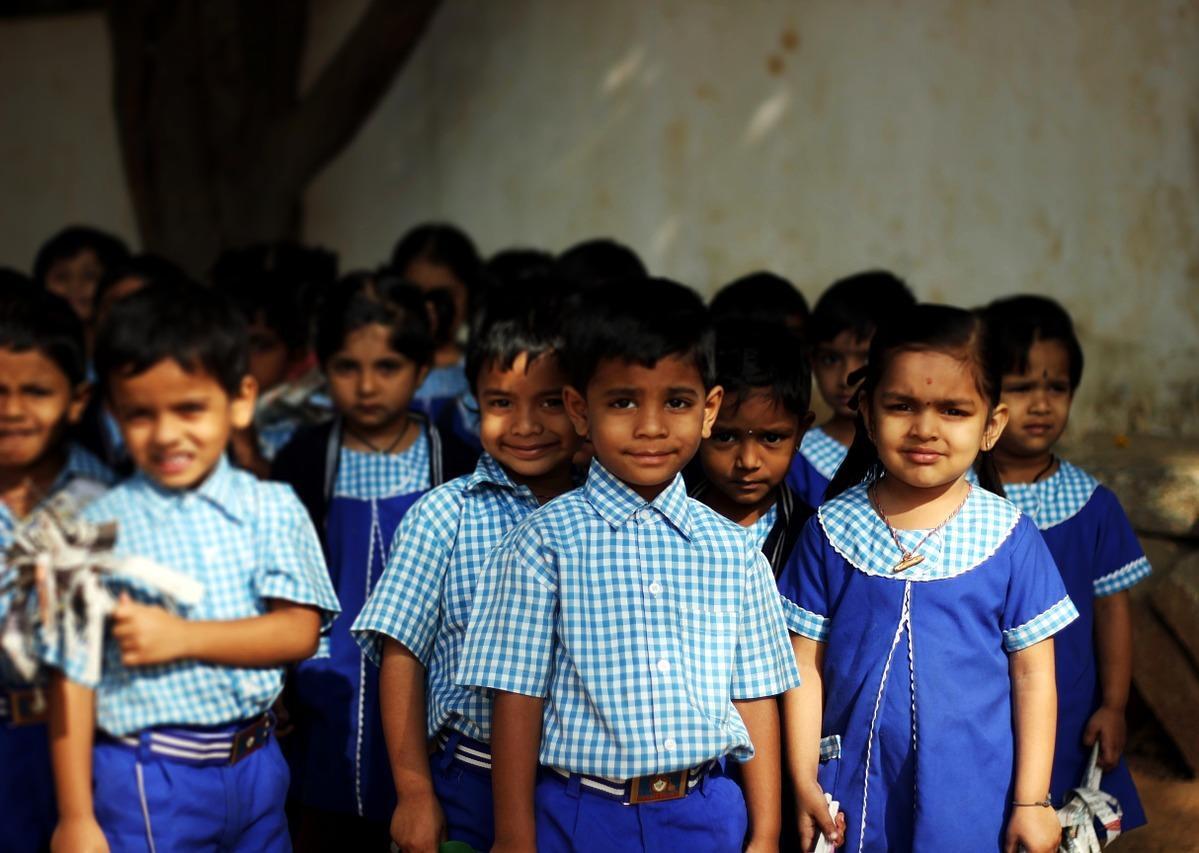
Find Hindi Lessons Online
Many online platforms will let you learn Hindi, either before you depart or once you make it to India.
Loecsen will be a great start if you want to learn the rudiments of Hindi. This free website will give essential phrases to use in different situations, how to use transport, how to order at the restaurant and how to greet people. The website will provide you with both the Devanagari script and the English phonetic pronunciation.
Duolingo is also an excellent tool if you want to learn Hindi before you move to India. The app claims that it can teach Hindi by following 5-minute lessons every day. Not sure how true this is, but practising your Hindi every day certainly can't hurt.
Rocket Language, the famous linguistic teaching company, also offers some free resources online, but the bulk of their lessons is only accessible if you pay. That being said, Rocket Language is a well-recognised teaching institution, and the methods they use have been proven to be efficient.
As you may not be able to find a lesson near you, why not have the lesson come to you?
Many of the qualified teachers registered on Superprof offer live webcam classes through platforms like Skype, ensuring that even busy learners can attend lessons without commuting. What truly sets Superprof apart is its personalised approach—you can choose from more than 1,000 experienced Hindi tutors, each with verified reviews and ratings, allowing you to pick a mentor whose teaching style suits you best.
While free online resources are useful at the beginning, most students agree that real progress comes when you receive individual feedback, structured guidance, and regular practice—all of which Superprof guarantees. Our tutors are skilled at simplifying complex grammar, guiding you through the verb forms, tenses, and participles until you can speak confidently and naturally. The platform’s flexibility means you can schedule sessions anytime, focus on exactly what you need (from conversational practice to script reading), and achieve results faster than by self-study alone.
If you want to take your Hindi journey seriously and master it with confidence, Superprof is one of the best platforms to start today. Its professional tutors, combined with flexible pricing and the ability to learn from anywhere, make it a truly perfect choice for both beginners and advanced learners.

